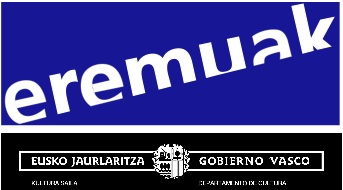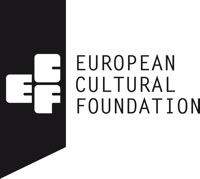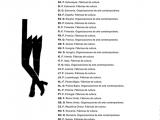
Bird cum ornithologist
2012. Revealing the production structure in contemporary art
The title “Bird-cum-ornithologist” is a quote used by the artists Cabello/Carceller to refer to their own practice. It is a critical appropriation they make of an assertion by Swedish artist Ann-Sofi Sidén, who is in turn alluding to Barnett Newman. The line between research/theory and praxis in contemporary artistic practices is certainly diffuse and the title is in itself a (re)production chain of appropriated, shared and (re)produced ideas. This work arises from consonni’s own practice, presenting itself as a producer of art. It is not about carrying out research from a scientific distance, but rather of doing it through practice itself and via different moments in consonni’s work. The two premises for analysis that consonni will be mulling over through different lines of work are: (1)“the evolution of the production concept in contemporary art” and (2)“how different production conditions in different contexts (their public policies, the conception of citizenship and public sphere…) influence artistic practices.”
This artistic research becomes a cross-disciplinary approach running through consonni and analysing its mode of working. This will lead to different momentums and outcomes. The notion is not (just) to supply the production apparatus but to attempt to transform it at the same time.
During 2012, we were involved in a residency programme in IASPIS (Stockholm), and carried out public debates, conferences and interviews. The interviewee profiles took in art professionals (artists, producers, curators, critics…), but also included people from the fields of politics, economics and political action: Lisa Rosenthal (IASPIS), Maria Lind (Tensta Konsthall), Magdalena Malm (MAP), Annika Eriksson, A.K Burns (W.A.G.E), Esa Nickle (Performa), Martha Rosler… among others…
During 2013, consonni was engaged in a residency in Hangar (Barcelona) and Matadero (Madrid), where interviews, debates and analysis of the institutions took place. Bartomeu Marí (MACBA), Carles Guerra, Tere Badia (Hangar), Daniel G. Andújar, Laurence Rassel (Fundación Tapiés), Oriol Fontdevila, Nuria Güell, Marina Garcés, Mireia Saladrigues, Jorge Luis Marzo. Manuela Villa (Matadero), the C.A.S.I.T.A collective, Manu de Basurama and Manu Fernández de Zuloark, Lurdes Fernandez (Off Limits); Álvaro Perdices, Ferran Barenblit (CA2M); Zoe Mediero and Azucena Klett, (Intermediae), Elena García-Oliveros (Toxic Lesbian), Benito Burgos (ICAA), Sören Meschede (Hablar en arte) among others…
Pájaro y ornitólogo al mismo tiempo // Remix from consonni on Vimeo.
consonni is inviting artists Cabello/Carceller and Pablo Marte to develop two pieces that take performance as a formula for unveiling the production apparatus. Performer and Again, Again(st), respectively, will be premiered during the Bilbao Festival of Contemporary Theatre and Dance, BAD. One of the lines of work that consonni has focussed on since it began in 1996, is that of analysing the art system itself, through actual productions. Andrea Fraser’s Little Franck and his carp and María Ruido’s Electroclass analyse and question the very system that consonni and the artists are situated in. Through analysis of this cultural framework many other issues are investigated as practices cross.
A series of publications/workbooks are also published. This idea involves the publication of a set of notebooks that act as a contemporary re-reading of an original text by Walter Benjamin from 1934, Author as producer. They are understood as a work tool in which the design permits anyone who so wishes to take notes about what they are reading. Emphasis is placed thereby on the notion of investigation. It can be understood as work in progress. The workbooks are published in Spanish and English. And they exist in book and ebook format. Benjamin’s original text is published, plus one by Marcelo Expósito, another by Gerald Rauning...
The project’s intra-histories.
The general research project is funded by Eremuak and the European Cultural Foundation, whilst each concrete component is backed by occasional specific support.
















